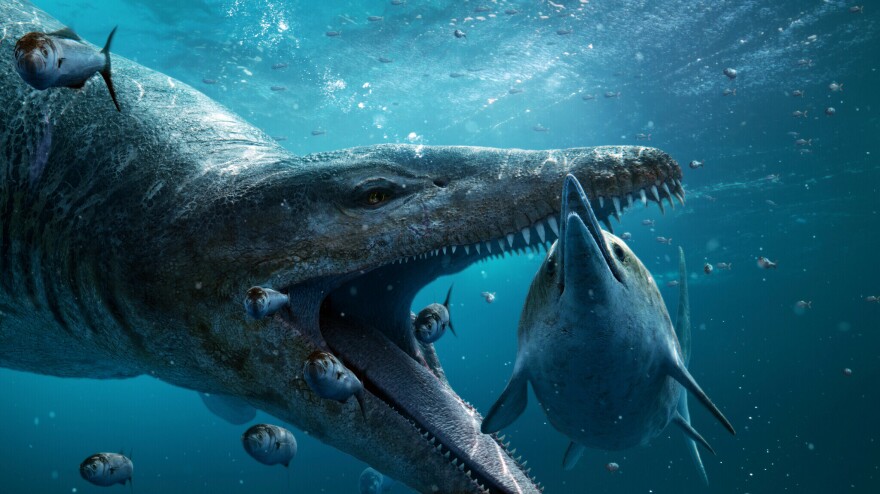Scientists have unearthed a largely intact skull of an immense and deadly sea creature that stalked the waters off England's coast millions of years ago.
It's not something you would have wanted to encounter on an afternoon swim.
Just the skull of the pliosaur, a marine reptile, was around six feet long, indicating how massive the sea monster would have been. It had a parietal — or third — eye and glands on its snout that may have helped it locate prey.
And when it did find prey — such as other reptiles or even fellow pliosaurs — it would chomp down with its 130 teeth in a bite far stronger than a crocodile's.
One expert told BBC News the pliosaur was "sort of like an underwater T. rex."
Though the fearsome animals existed contemporaneously with dinosaurs, the pliosaur is more closely related to lizards or snakes.

Scientists say the newly discovered fossil is one of the most intact pliosaur skulls ever found, and it's set to be featured in a BBC One special hosted by David Attenborough on New Year's Day. (In the U.S., it will air on PBS on Feb. 14.)
"It's one of the best fossils I've ever worked on," paleontologist Steve Etches told BBC News. "What makes it unique is it's complete."
Etches' friend, Phil Jacobs, first spotted the skull's snout during a walk on the beach near Kimmeridge Bay in Dorset, along England's World Heritage Jurassic Coast.
Scientists then spent months digging out the rest of the fossil from a cliffside along the beach and cleaning it up.
Etches says he'll display the skull in his museum in Kimmeridge, the Etches Collection, next year.
But he believes there's more to the fossil still waiting to be found in the cliffs, which he says are quickly eroding.
"I stake my life the rest of the animal is there," Etches told BBC News. "And it won't be very long before the rest of the pliosaur drops out and gets lost. It's a once in a lifetime opportunity."
Copyright 2023 NPR. To see more, visit https://www.npr.org.


